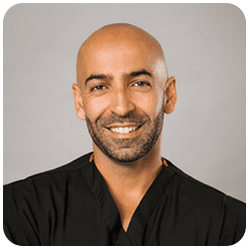An unexpected migraine can keep you down for hours or days, forcing you to miss work or other activities while you deal with debilitating pain and other symptoms. Lots of different things can trigger migraines, from stress to sensory inputs. For about 10% of migraine sufferers, foods are a migraine trigger.
Understanding food triggers
If you’re living with migraines, we recommend that you look at your diet to see if you should cut out or avoid certain common trigger foods. You may be able to reduce unexpected migraines. If you’d like to discuss your specific case with Hasan Badday, MD, at Pacific Pain and Regenerative Medicine, we’re happy to schedule a consultation. Dr. Badday specializes in pain management and can help you design meal plans that won’t leave your head aching.
The way you eat affects your overall health in many ways, including headaches and migraines. For some people, specific trigger foods can be directly tied to migraine episodes. Whether your migraines respond to specific triggers or not, improving your eating habits will improve your condition.
If you want to identify your food triggers, don’t try to cut all the potential trigger foods from your diet at once. Stressing your system increases and masks potential symptoms. Instead, use a headache diary to track what you’re eating, and note any correlations with migraine episodes. Experiment to discover which foods, or combination of foods, function as a trigger for your migraines.
Tyramine
Tyramine naturally occurs in foods like cheese, forming as proteins break down due to age. The higher the protein, the more tyramine the food contain as it ages. If you take a monoamine oxidase inhibitor (MAOI) medication, avoid all foods containing tyramine because it can trigger migraines in some people. Tyramine itself can also trigger migraines.
Foods that contain tyramine include:
- Aged cheeses (blue cheeses, brie, cheddar, English stilton, feta, gorgonzola, mozzarella, muenster, Parmesan, Swiss)
- Red wine
- Some processed meats
Additives
Common additives sometimes trigger migraines. If you’re looking for migraine triggers, try cutting back on these additives:
- Monosodium glutamate, or MSG, a savory additive similar to salt, sometimes listed on food packaging as “hydrolyzed protein”
- Artificial sweeteners including aspartame
- Preservatives containing nitrates and nitrites, common in foods like hot dogs, breakfast and lunch meats, deli meats, and cured or processed meats, and also present in some heart medications
Caffeine
Caffeine treatments can actually help with migraines and other headaches, but the dosage needs to be carefully controlled. You only need 200 mg each day, about the amount of caffeine in one small cup of coffee.
Eating or drinking too many foods and beverages that contain caffeine — like chocolate, coffee, tea, and cola — may trigger your migraines. Caffeine withdrawal can also be a trigger, so take care when eliminating caffeine from your daily routine and be prepared for an increased risk of headaches initially.
Alcohol
Alcohol triggers migraines for some sufferers, due to the effect it has of increasing blood flow to your brain. The dehydration caused by alcohol can also be a migraine trigger. Watch out for red wine, beer, whiskey, scotch, and champagne in particular, and cut back on alcohol consumption in general to avoid triggering headaches.
Other foods to watch out for
Food triggers vary widely among migraine sufferers. In addition to the categories above, here’s a list of other common triggers:
- Bananas
- Beans (like broad or fava)
- Cold foods, especially if eaten quickly, or when you are overheated
- Corn
- Citrus fruits like oranges and lemons
- Cultured dairy products like yogurt and kefir
- Nuts and nut butters
- Onions
- Tomatoes
Your migraines won’t be triggered by all of these foods, but if you do have food triggers, they’re the most likely culprits.
Dr. Badday can guide you through the process of isolating, identifying, and eliminating any foods that may be triggering your migraines. To find out more, call to schedule an appointment, or conveniently book online.









